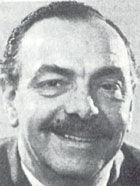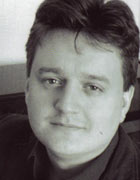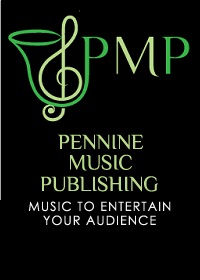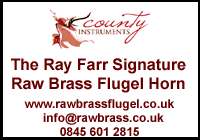2009 Regional Championships - Test piece reviews
23-Feb-2009Paul Hindmarsh delves into the musical detail of the test pieces that will be performed during the Regional contests in March.
 The music panel of the National Brass Band Championships seems to have taken Vinter’s title at face value in its selections for sections one to four, and have opted for three newcomers – all of whom had achieved their first exposure at the Swiss National Championships last year – and one seasoned, but rather over-looked campaigner.
The music panel of the National Brass Band Championships seems to have taken Vinter’s title at face value in its selections for sections one to four, and have opted for three newcomers – all of whom had achieved their first exposure at the Swiss National Championships last year – and one seasoned, but rather over-looked campaigner.
Championship Section: Salute to Youth by Gilbert Vinter
It was probably not much of a surprise when a work by Gilbert Vinter, born one hundred years ago, was selected by the music panel of the National Brass Band Championships for the Regional contests that begin in Blackpool this week.
'Salute to Youth' brought Vinter into the brass band movement at the Regional events of 1962.
Leading conductor
He was already established in British musical life as a leading conductor and arranger of light music. The colour and incisive energy that he brought to the brass band repertoire over the remaining years of his life revolutionised the sound of brass band competitions.
Speaking at the recent RNCM Festival of Brass in Manchester, Gilbert Vinter's youngest son Dr Andrew Vinter recalled that his father had been unaware of what the elite bands of his day were capable of until he was taken to hear the Munn & Feltons, subsequently the GUS (Footwear ) Band, at close quarters in its Kettering bandroom.
Impressed
Vinter was so impressed by the standard of playing and the musicianship on display by the band members and their legendary conductor Stanley Boddington that he was determined to write something for 'these remarkable musicians'. The eventual outcome was 'Salute to Youth', in which he was inspired by his son Andrew, who was then 17.
'Salute to Youth' is a remarkably assured first brass band work. The scoring is a model of clarity. Vinter's self-confessed mission was to tease maximum colour out of the brass band instruments. His approach was a world away from way in which the band was conventionally 'voiced'.
Sonorous
The sonorous scoring techniques of Eric Ball or Frank Wright that dominated the 'contest field ' of the 1950s and early 1960s, emphasised the organ-like homogeneity of the band sound. While this was entirely appropriate for the romantic styles in which they worked as composer and arranger, Vinter wrote with a more 'current' voice – a more up to date harmonic pallet, a crisper rhythmic profile and a quixotic expressive range.
The novelty of his approach seemed to straddle the divide between what at the time was thought of as 'serious' or 'light' music.
Even his employers, the BBC, didn't know quite where to pigeon-hole him – memos preserved in the BBC's Written Archives in Caversham, near Reading, indicate that his music was considered too light for the Third Programme, the home of serious art music on the radio, but too serious for the BBC Light Programme. This was the home of the orchestra he conducted and arranged for – the BBC Midland Light Orchestra.
Speeds
Vinter sets the music of 'Resilience' in four specific speeds. Making a coherent whole out of the opening mosaic of themes, tempi and unpredictable temperament is the first of many challenges which performing Salute to Youth still poses 47 years after its first performances.
The slowest speed is associated with the opening heroic theme. It is heard three times, on cornets, horns and then trombones. The fastest speed is linked with a 'chattering theme' on the cornets that answers the third and most dramatic statement of the heroic fanfare.
The first two answers – like a rising surge of emotion – are marked poco accelerando. But each time the heroic theme returns resolute, first on emphatic horns and then defiant trombones.
Chattering
The chattering cornet theme produces a firm response (heroic theme on soprano cornet). An outburst of anger – trombones and bass – softens the response (heroic theme more gently on a solo cornet). The fast tempo now relents a little as a new sustained lyrical theme on horns initiates a discussion with a version of the heroic fanfare that decorates a pedal point on the basses.
The outcome is a fiery display of heroic temperament, which still seems unwilling to move forward or go faster.
In the second half of the movement Vinter displays the full range of his considerable technique as the fragments battle it out with greater musical continuity in a single extended paragraph. This 'moody' music ends abruptly and apparently without any resolution. The complete resolution occurs in the finale, when the 'Resilience' themes return transformed in the rough and tumble of 'Relaxation'.
Romance
Although the 'Romance' is the most conventional of the three, it displays a feature of Vinter's approach to musical development common to all the movements. His structures are simple but the journey is always progressive.
In the first movement the reprise of the opening mosaic of themes is contained within a single climatic paragraph. In the 'Romance', the beautifully shaped tune, which we hear initially shared by various soloists (in rather uncertain or tentative fashion) returns resplendent and full of ardent confidence.
Relaxation
Vinter indicates that 'Relaxation', the rondo-like finale, should be played as fast as possible. I would add a qualification to that – high spirits, yes, but without damaging the spring of the music's rhythmic profile.
Too slow, however, and the lyrical episode towards the end, which is so cleverly related in speed to the rest, will last too long thus upsetting the balance of the entire movement. A moments rest is all that a teenager requires before the rough and tumble of a teenager's approach to relaxation begins all over again to bring this inspiring work to an energetic close.
'Salute to Youth' is published by Josef Weinberger and available through Studio Music.
 First Section: Pentacle by Graham Cole
First Section: Pentacle by Graham Cole
'Pentacle' is the 'debut' test piece of composer and arranger Graham Cole (30). A graduate of Huddersfield University, Graham is a senior music teacher at Heckmondwike Grammar School, where, as well as teaching music he is course leader for A-level Music Technology.
Distinction
His love of the brass band medium started young and he started his senior brass band activities with his local band the Drighlington Band, for which he played principal horn until 2001. For his Master of Music degree, which he gained with distinction at Leeds University in 2004, Graham focussed on composition and film scoring.
In its first incarnation, Pentacle was part of Masters submission. In its revised form it was a prize-winning submission for the Young Composers Competition promoted by the Swiss Band Association, and was successfully selected for the First Section of the 2007 Swiss Nationals.
Fives
As the title suggests, 'Pentacle' is all about fives.
The origins of this five-pointed symbol goes back to remotest historical antiquity and have been honoured by many civilizations including the Jewish people, the ancient Celts – for whom the five-pointed star was a symbol of life – and it became the most famous symbol of witchcraft.
Angles
Traditionally, each of the five angles has been attributed to the five metaphysical elements of the ancients. The fact that five-fold forms provide the very essence of so much organic life, also influenced the way Graham composed 'Pentacle'.
Although he conceived it as a brass band test piece, Graham makes clear in his programme note that he has not been a slave to the genre's conventions, but rather like his teacher Philip Wilby (whose music is surely an influence on the concept if not the language of the work) he has interpreted them in his own terms.
Five movements
There are five movements, with three short bursts of energy and musical pyrotechnics balanced by two 'songs without words'.
The irregularity of five-beat rhythms and quintuplet groupings are at the top of the work’s list of technical challenges. Interval s of the fifth (perfect, augmented and diminished) provides the most significant features of Graham's thematic and harmonic language.
But there are also layers of sub-text and symbolism that inform the character the music, which is direct, almost cinematic in expression, but which does not rely on Hollywood imitation for its effectiveness.
Earth
Earth: In the pentacle, the lower left hand corner represents stability and endurance. Consequently there is a firm, if irregular time pulse holding the energetic momentum of the music in check.
The main motif is founded on the quintuplet and should be played evenly. In this movement and elsewhere, Graham employs the ground bass to sustain the music's development. At letter B for example. the intricate cornet solo is supported by a repeating bass line derived from the main theme.
There is an immediacy of expression in this movement that should be conveyed through crisp articulation, clarity of texture (the music is layered in distinct groups or choirs of instruments) and respect for the different levels of dynamics through which these layers have been carefully balanced.
Wind
Wind: The upper left hand of the pentacle represents intelligence and the arts. Graham responds to these layers of symbolism with a sustained lyrical episode.
Care should be taken not to let the music get too slow. The metronome marking of crotchet 92 has been carefully chosen to allow for expressive freedom for the euphonium, trombone, solo cornet and flugel horn but not over indulgence, which will distort the formal balance of the piece as a whole.
The melody begins like a gentle breeze and it is only when it is taken up by the full band that the full force of its impact is heard.
This richly textured climax is followed by a dramatic interjection from the low brass based on the fifths and an ominous response from the upper brass, in which the rapid wisps of semi-quavers that enriched the climax take on a more sinister aspect. For the moment anyway, the sound of the soprano cornet soaring effortlessly (!) up to a high B restores the calm. But not for long.
Fire
Fire: The lower right hand corner of the pentacle also represents courage and daring. Here Graham gives us the most dissonant and fractured music of the work. The main material fro the opening movement is subject to heavy distortion.
The tritone or augmented fourth (known in medieval times as the 'devil's ' interval) dominates the harmonic language. Rushing chromatic quintuplet scales, flutter tonguing and other highly dissonant effects have to be negotiated by the brass whilst the percussion leads the main thrust of the crackle and spit of the fire.
Here and elsewhere the percussion parts underpin the musical momentum, but care should be taken in balancing the percussive effects with the volume of the brass.
The movement appears to end in complete chaos – at least that is the required effect – but the effect should not be completely random, since the composer has determined how the passage should be heard in the way he has layered up the writing.
Water
Water: The upper right hand spur represents emotion and intuition. Graham has reflected this in music that sounds more rhapsodic, and intuitive character, but which is still highly organised.
The melody – with the fifth and its inversion, the fourth, as its dominant intervals – is more highly decorated than the tune of Wind and is supported by another repeating bass figure.
In the brief middle section of this miniature song form, the decorative arabesques of the solo horn, glockenspiel and soprano cornet are counterpoints to the simpler melody of the principal bass (note its kinship to the Wind tune).
Quintessence
Quintessence: In Graham's hort conclusion, the forthright style of Earth and the rushing quintuplet scales of Fire combine to drive the music towards its ultimate goal – the final chord.
Momentum is sustained by the percussion, which should dominate but not overpower.
As Graham explains in his programme note, he has aimed to produce music with an ‘ambiguity of tone, time and place – echoing the use of the pentacle across the many factions of history.’
Pentacle is published by Faber Music Ltd. www.fabermusic.com
 Second Section: New World Sketches by Daniel Price
Second Section: New World Sketches by Daniel Price
Daniel Price (32) has recently completed his Masters portfolio of compositions. His studies, under Peter Graham at Salford University, culminated last year in the success of his charming brass band suite 'An Elgar Portrait', which was successfully launched in the Fourth Section of the Swiss National Championships.
Concept
Dan’s original concept for his latest work, New World Sketches, was a kind of 80-days round the world in music, but, as he has commented , ‘When I got to America, there was so much material to use that it developed into a piece of its own’.
His idea was to create something like a film sketch-pad, with easily recognisable American musical fingerprints that would bring the music to life. The structure and 'working out' of New World Sketches is not as complex as Salute to Youth or Pentacle, so conveying idiomatically the various styles will a crucial factor in determining the best performances.
Resourceful
Dan's scoring is resourceful, colourful and well balanced. Solo lines have been integrated into the substance of the work – a welcome feature in all the test pieces this year – so that the flow of the music is not interrupted.
Sidewalk :
A firm thematic nod in the direction of up-tempo George Gershwin at the outset, establishes us firmly in the 1930s, but the car horns and whistles that we hear are not Parisian.
This sidewalk is in Manhattan with bustling outer sections indebted thematically and stylistically to the famous opening gestures of An American in Paris and Rhapsody in Blue. The slick syncopations and striding bass chords would suggest that our sidewalk might be on Broadway – with Dan's 'show tune' dancing from flugel horn, to trombone, euphonium and finally cornets.
A direct quotation from Rhapsody in Blue leads, via to a side-slip of key and a relaxation of pulse so beloved of the great arrangers and orchestrators like Robert Russell Bennett , to a glimpse of a jazz club in the northern quarter of Harlem.
There is a suggestion of the Duke Ellington style here, but it is soon swept away as a condensed reprise of the opening music ends the movement.
In the Deep South:
Dan takes us now back in time to the 1890s.
The melody of the outer section, with its simple outline and soulful character, takes on the character of a spiritual, Dan's treatment is perhaps more akin to contemporary gospel styles.
Tubular bells herald a more intricate middle section – describing the arrival of the steam train. Oscillating harmonies and blues notes connects once more to the music of Ellington and particular his opera Jump for Joy.
Rodeo:
There is much more rhythmic and textural detail to negotiate at the start of Dan's rumbustuous hoe-down.
While the bright and breezy manner of Aaron Copland’s Rodeo is unmistakeable, the music soon veers away into what sounds like an Irish reel, complete with a bodhran-like beat from floor toms.
This imaginative juxtaposition emphasises how influential Irish traditional music was in the evolution of 'all-American’ style.
At the height of the music's textural complexity, a clever rhythmic modulation from the solo trombone transforms the scene from hoe-down to chapel – and a folksong-like vignette of solos, which Dan suggests 'could be seen as the preacher warning against frivolities' like dancing.
A reprise of the hoe-down music and the opening music from Sidewalk brings the entertainment to a vibrant close.
Strong elements
The strong element of stylisation (or pastiche) should not lure performers of this music into a false sense of confidence. All too often we hear the bandroom gossip – ‘there’s nothing in it’ or ‘it’s like concert music’ – only for the performances on the day to be severely under-cooked.
New World Sketches may not appear to be overly ‘technical’ in the sense that it’s not full of cadenzas, scales and test piece tricks, but it has pitfalls a-plenty in rhythm, balance, colour, ensemble and above all style and character.
Dan, who lives in Bury, is currently expanding his portfolio of work, building on these first successes with works that he hopes will provide something meatier and more individual. Interest is being shown by some of the country’s elite bands.
He is also writing for symphonic band and is looking to widen his horizons further into the orchestral field.
New World Sketches is published by Kirklees Music www.kirkleesmusic.co.uk
Third Section: The Once and Future King by Andrew Baker
'The Once and Future King' is a three movement symphonic suite by Manchester-based composer Andrew Baker (35).
Chuffed
He was ‘chuffed to bits’ that this piece was selected for the UK Regionals, following its success in the Third Section in Switzerland in November 2007.
Andrew, who is a music graduate from Nottingham University, began his banding playing cornet with the Northop Youth Band in North Wales.
During his years in north Manchester, he has conducted the Blackley Band (2003-5) and played with the Middleton Band (2007 National Champions in the Third Section). He is currently conductor of the Coppull and Standish Band, near Wigan.
Detail and clarity
Although his portfolio of compositions is not extensive (Andrew runs an educational printing business), his music is notable for its precision of detail and clarity of expression. There is a pronounced English quality to it, stemming from his love of the music of the great Ralph Vaughan Williams and of English modality in general.
The title 'The Once and Future King' is taken from King Arthur's legendary dying words, 'Bury me in Britain, for I am the Once and Future King'. Each movement is inspired by an Arthurian legend.
Tintagel:
There is an epic, 'big-screen' quality to this first movement, in which Andrew's image is an imaginary visit of Arthur, King of the Britons, to his birthplace, the land of King Mark of Cornwall.
An heroic, polytonal fanfare on cornet and trombones is set against a noble, modally inflected hymn exploiting the mellow timbres of high euphoniums, horns and the basses. The interaction between hymn and fanfare provides the thrust of the main portion of the pseudo - antique styled writing.
The fast music begins in agile, dance-like mood, but builds to a powerful and sustained climax. Bands will need to keep plenty of quality tone in reserve .
Lyonesse:
Legend has is that this mythical land was once joined Cornwall to the Scilly Isles but was submerged beneath the sea by Merlin, who cast his spell to drown the remnants of Arthur’s army after the battle of Camlan, during which Arthur was killed.
Andrew’s atmospheric music is based on two dissonant ideas – the 'cluster' chord which he builds at the outset and the interval of the tritone (produced when the perfect fourth is raised by a semitone).
The raised fourth is also the characteristic, which distinguishes the major scale from the old Lydian mode. Andrew exploits this very English sounding melodic inflection to the full.
He has acknowledged the influence of Edward Gregson on his brass band music, and here it is the example of the lyrical central episode of Gregson's Of Men and Mountains that seems to be a model, especially the poignant phrases given to the soloists.
Supported by gently syncopated chords (another Gregson finger print) and enriched by the Lydian fourths, the music's 'period' flavour is further enhanced through sonorous harmonic support and filigree percussion effects.
Subtle dynamic shadings, rock solid intonation and well-balanced and supported chords will be essentials.
Badon Hill:
This is the site of Arthur’s last battle with the Saxons. Andrew has composed a energetic toccata based on the anonymous medieval song L’homme Armé (The Armed Man).
This once popular war song was used as the basis for settings of the Christian Mass liturgy by some of the most celebrated 14th and 15th century composers of Northern Europe.
However, comparisons are bound to be made here with Karl Jenkins' recent mass setting The Armed Man, which also uses the tune in a number of its
movements.
Andrew uses it as the basis for a series of increasingly intricate and dynamic variations, during which a number of medieval composition techniques are employed, including the hocket – where snatches of the themes are passed from voice to voice in rapid succession.
Stretches
Having played in a leading third section band, Andrew is well aware of what will stretch bands at this level. The Once and Future King will provide a substantial challenge, but all participants should find much to enjoy in the preparation of this well-judged and crafted work.
The Once and Future King is published by Jagrins Music Publications www.jagins.com
Fourth Section: The Talisman by Frank Hughes
Frank Hughes has been out of the banding limelight for many years. Now in his mid-70s, Lancashire-born Frank learned the cornet in his local band, Pemberton Old, continuing his banding in Besses Boys, then later Wingates Temperance and Fodens Motor Works, under Rex Mortimer.
Composing bug
He caught the composing bug as a young man and took lessons initially from Wingates legend Harold Moss.
But Frank has remained essentially a self-taught, but busy part-time composer. He studied avidly, taking much inspiration from the Danish composer Carl Nielsen (1865 – 1931) and the Russian Sergei Prokofiev (1891 – 1953).
Lesson learned
Lessons learned from these 20th century greats has given Frank’s music a quirky quality – apparently simple themes and melodies set in unpredictable harmonic or rhythmic contexts.
Over the years he has had works featured on radio, tv and at band contests, but this is his first National Championships selection. He composed a number of works for the brass of the Manchester based BBC Northern Orchestra (now Philharmonic), among whom was trumpet legend Maurice Murphy. The initial inspiration for 'The Talisman' came to Frank during a rainstorm that brought to a premature end a concert that the Foden's Motor Works Band was giving in Hyde Park, London.
Conceived
The work was originally conceived as a quartet for Foden's Champion Quartet, but was re-written for full band at the suggestion of the band's conductor James Scott.
Since those days. Frank has continued to write and is still composing in his active retirement.
His tally of compositions extends to over 100 works. He is both delighted and surprised that 'The Talisman' has been selected – surprised because of its technical complexities.
Abstract construction
Although the music is essentially abstract in construction, the title, taken from the 1825 novel by Sir Walter Scott, came to Frank during the composition, because of the way the music was developing.
The novel's images heroism, threat, war and the eventual triumph of peace may help in interpreting Frank’s music. Participants in this section will have to negotiate the ambiguous rhythmic profile of the first movement and find the musical line through the complex and quixotic finale.
Interlude
The short central movement is essentially a brief lyrical interlude. Intonation will need to be spot on and the exposed melodic phrases well supported with quality tone.
The solo lines are far from straightforward and extend into quite high ranges. Much of the textural detail is unpredictable, following in the footsteps of Frank’s idol Nielsen. In many respects The Talisman presents a sterner technical and musical challenge than the third section choice.
It will be fascinating to hear how the country’s fourth section bands get to grips with it.
The Talisman is published by MMI Music www.mmi-music.co.uk















